… Can Be Achieved with the Proper Framework
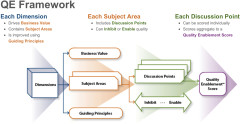
“Do not go where the path may lead; go instead where there is no path and leave a trail”
Ralph Waldo Emerson
Introduction
This and the next dozen or so newsletters will cover the details of the Quality Enablement (QE) Framework and Quality Enablement (QE) Cycle, and the reading may be a bit dry at times. But this is the information needed to use the framework to identify the biggest obstacles and eliminate them.
Here are the planned topics:
- QE Framework Overview (this week’s entry)
- Dimension details (one newsletter for each of six dimensions)
- QE Score workbook – the math behind the number
- The “Edges” – result of moving pairs of dimensions from inhibiting to enabling
- QE Cycle Overview (the project life cycle)
- QE Cycle details (one newsletter for each of four phases)
This week, we’ll cover the QE Framework, which is at the heart of the process. Everything else in this and most future newsletters will build on the information covered here. So let’s get started.
QE Framework Overview
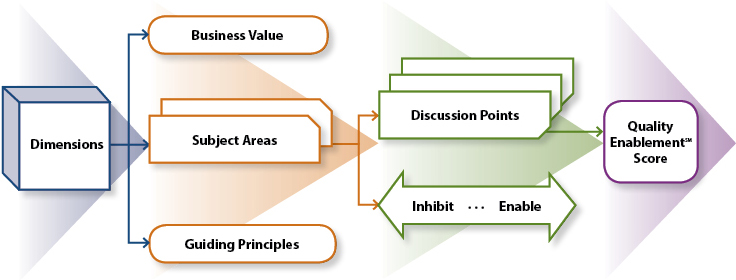
The framework consists of the components in the diagram above. They interact as follows:
- Each Dimension:
- Drives business value;
- Contains subject areas; and
- Is improved using guiding principles.
- Each Subject Area:
- Includes discussion points; and
- Can inhibit or enable quality.
- Each Discussion Point:
- Can be scored individually; and
- Scores aggregate to a Quality Enablement Score.
Here’s a link to an interview that may help provide more context:
Now let’s look at each of those in more detail.
Dimensions
There are six dimensions:
- People
- Proces
- Tools
- Metrics
- Agility
- Management Style
Certainly, the first three (people, process, tools) are the core dimensions, and cover the basics; the next three are combinations / special cases of the core dimensions. We’ll cover each of these in detail in future newsletters.
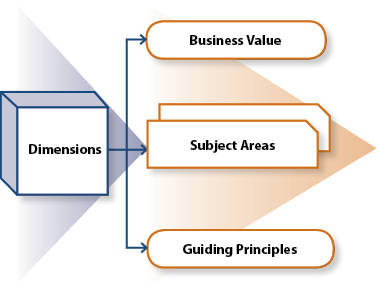
Each dimension, when enabled, delivers business value. Some examples are:
- Lower talent acquisition costs (People),
- Increased throughput (Process),
- Quicker response to business opportunities (Agility),
- and so on.
The guiding principles help determine the approach we would take to move a dimension from inhibiting to enabling. Frankly, these reflect my management style, and the way that I would approach the project. Your approach may be guided by different principles. Here are some examples, by dimension:
- People
- People want to feel in control.
- Process
- Processes need to be flexible.
- Tools
- Tools support processes (not the other way around).
- Metrics
- Fewer are better.
- Agility
- Organizational agility and agile development both enable quality.
- Management Style
- Management support the teams (not the other way around).
Subject Areas
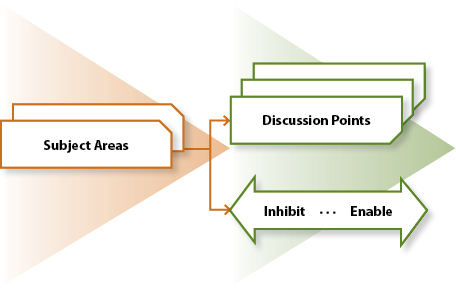
Within each subject area, we have discussion points that guide real conversations. From those discussions, we can determine where the organization currently sits, from inhibiting to enabling, for each discussion point.
Discussion Points
Discussion points are specific to each dimension, and allow us to explore an organization’s current practices. For example, in the People dimension, the discussion points cover the life cycle of a worker’s employment in the following areas:
- Talent acquisition – how are job requirements written, what’s the interview process, etc.
- On-boarding – How are new team members brought up to speed and set up for success?
- Training – What’s the ongoing process to keep people’s skills up to date?
- Performance reviews – How are performance expectations set and evaluated?
- And so on.
QE Score
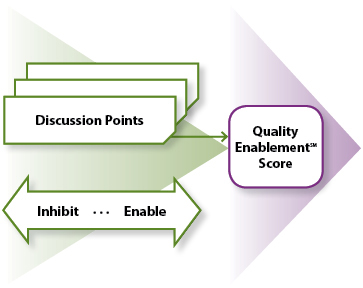
As a result of the conversations, each discussion point can be scored from 1 (inhibiting) to 7 (enabling). Most discussion points can range from 1 to 7, but some are purely inhibiting if they are present at all (such as an environment of fear), and some are purely enabling (such as use of mentors). Finally, discussion points vary in importance, so each has a weight from 1 to 5. As a result, we can determine a score for each dimension, and compare that to the “middle” – a score of 4.
At this point, since we’re still in the initial rollout of the information, there isn’t much I can say to guide your use of this information above. The framework overview, by itself, isn’t actionable.
Even though we’re just getting started, please let me know if you have any questions or comments. You have two options for your inquiry:
- If you want to share your comments with the rest of the readers, then post it as a comment below.
- If you want to ask a private question, then please use the Inquiries tab (top of page), fill in the form, and click Submit.
What’s Next
We’ll examine the People dimension next week, and start putting real “meat” on the skeleton we just covered.
Until then …
“The greatest obstacle to transforming the world is that we lack the clarity and imagination to conceive that it could be different.”
Roberto Mangabeira Unger


What are your thoughts? Please share your comments in the block below.